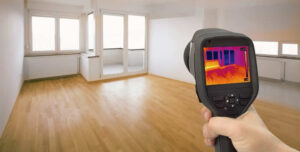Finding Concealed Water Line Leaks: Six Proven Strategies
Finding Concealed Water Line Leaks: Six Proven Strategies
Blog Article
Just about every person maintains their unique way of thinking with regards to Leaking water lines.

Early detection of dripping water lines can mitigate a prospective disaster. Some small water leakages might not be noticeable.
1. Analyze the Water Meter
Inspecting it is a proven method that helps you find leakages. If it moves, that suggests a fast-moving leakage. This means you may have a sluggish leakage that can also be underground.
2. Check Water Usage
Examine your water costs and also track your water intake. As the one paying it, you should notice if there are any inconsistencies. If you identify sudden changes, despite your usage being the same, it implies that you have leaks in your plumbing system. Remember, your water costs need to drop under the exact same range monthly. A sudden spike in your costs suggests a fast-moving leak.
A constant rise every month, also with the exact same practices, reveals you have a sluggish leakage that's also slowly intensifying. Call a plumber to extensively check your residential or commercial property, specifically if you feel a cozy location on your flooring with piping underneath.
3. Do a Food Coloring Test
30% comes from commodes when it comes to water intake. Examination to see if they are running properly. Decrease flecks of food color in the tank as well as wait 10 minutes. There's a leakage in between the storage tank and dish if the color in some way infiltrates your dish throughout that time without flushing.
4. Asses Outside Lines
Don't neglect to inspect your outside water lines also. Test faucets by connecting a yard hose. Should water leak out of the link, you have a loose rubber gasket. Replace this as well as make sure all connections are limited. If you have actually got a sprinkler system, it will certainly help get it properly took a look at and preserved every year. One little leakage can squander tons of water and also spike your water bill.
5. Examine and Analyze the Circumstance
House owners need to make it a routine to examine under the sink counters as well as also inside cabinets for any type of bad odor or mold growth. These 2 red flags suggest a leakage so timely attention is called for. Doing routine inspections, also bi-annually, can save you from a significant trouble.
If you understand your residence is currently old, keep a watchful eye on your heating systems, tubes, pipelines and so on. Look for stainings and deteriorating as many pipelines as well as home appliances have a life span. They will additionally normally wear away due to tear and also put on. Do not wait for it to intensify if you think leaking water lines in your plumbing system. Call an expert plumber today so you don't end up with a dreadful mess in your home.
Early discovery of dripping water lines can alleviate a potential disaster. Some little water leaks might not be noticeable. Inspecting it is a guaranteed means that helps you uncover leaks. One small leakage can waste heaps of water and spike your water expense.
If you suspect dripping water lines in your plumbing system, do not wait for it to escalate.
WARNING SIGNS OF WATER LEAKAGE BEHIND THE WALL
PERSISTENT MUSTY ODORS
As water slowly drips from a leaky pipe inside the wall, flooring and sheetrock stay damp and develop an odor similar to wet cardboard. It generates a musty smell that can help you find hidden leaks.
MOLD IN UNUSUAL AREAS
Mold usually grows in wet areas like kitchens, baths and laundry rooms. If you spot the stuff on walls or baseboards in other rooms of the house, it’s a good indicator of undetected water leaks.
STAINS THAT GROW
When mold thrives around a leaky pipe, it sometimes takes hold on the inside surface of the affected wall. A growing stain on otherwise clean sheetrock is often your sign of a hidden plumbing problem.
PEELING OR BUBBLING WALLPAPER / PAINT
This clue is easy to miss in rooms that don’t get much use. When you see wallpaper separating along seams or paint bubbling or flaking off the wall, blame sheetrock that stays wet because of an undetected leak.
BUCKLED CEILINGS AND STAINED FLOORS
If ceilings or floors in bathrooms, kitchens or laundry areas develop structural problems, don’t rule out constant damp inside the walls. Wet sheetrock can affect adjacent framing, flooring and ceilings.
https://www.servicemasterbyzaba.com/blog/how-to-detect-water-leakage-in-walls/

I recently found that page about Top leak detection hacks while doing a lookup on the internet. Appreciated our piece of writing? Please share it. Let somebody else discover it. I enjoy reading our article about Hacks to detect leaks.
Book Instantly Report this page